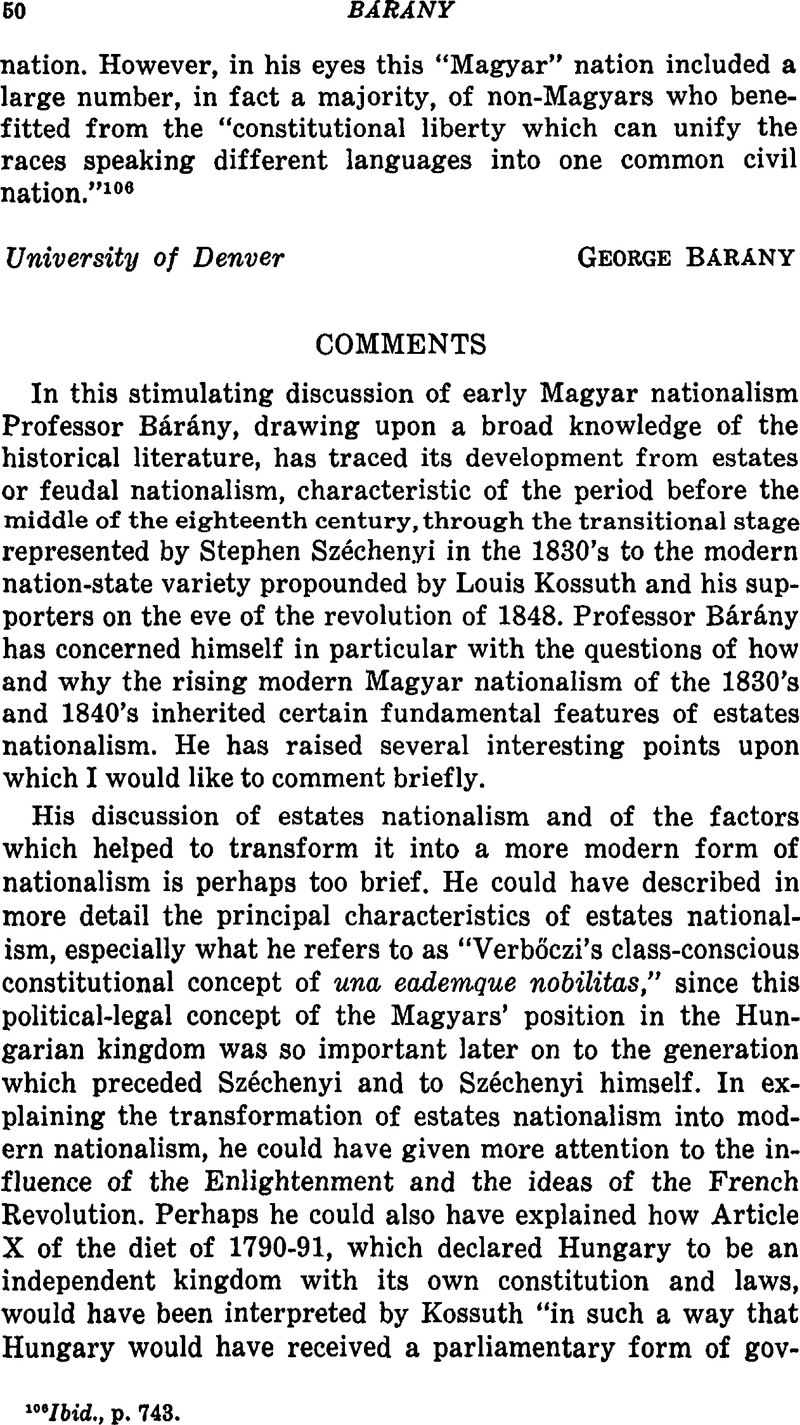No CrossRef data available.
Article contents
Comments
Published online by Cambridge University Press: 10 February 2009
Abstract

- Type
- Comments
- Information
- Copyright
- Copyright © Center for Austrian Studies, University of Minnesota 1966
References
1 Knatchbull-Hugessen, C. M., The Political Evolution of the Hungarian Nation (2 vols., London, 1908), Vol. I, p. 65Google Scholar. In many respects, however, the constitutional equality of all noblemen was but a legal fiction. The Chamber of Magnates separated from the Chamber of Estates, which represented the common nobility, in 1608 and developed into the upper house of the diet. In practice, there was quite a difference between a Hungarian aristocrat and a member of the lesser nobility. See Harold, Steinacker, Zur Frage nach der rechtlichen Natur der Osterreichischungarischen Gesamtmonarchie (Vienna, n. d.), p. 31.Google Scholar
2 Jászi, , The Dissolution of the Habsburg Monarchy, pp. 298–299Google Scholar. See also Macartney, C. A., Hungary (London, 1934), pp. 66–68.Google Scholar
3 For a complete text, see Marczali, Enchiridion, pp. 765–766. An English translation is available in Knatchbull-Hugessen, , The Political Evolution of the Hungarian Nation, Vol. I, pp. 233–234.Google Scholar
4 Marczali, , Hungary in the Eighteenth Century, p. 316Google Scholar. See also Steinacker, , Zur Frage der rechtlichen Natur, pp. 24–29.Google Scholar


